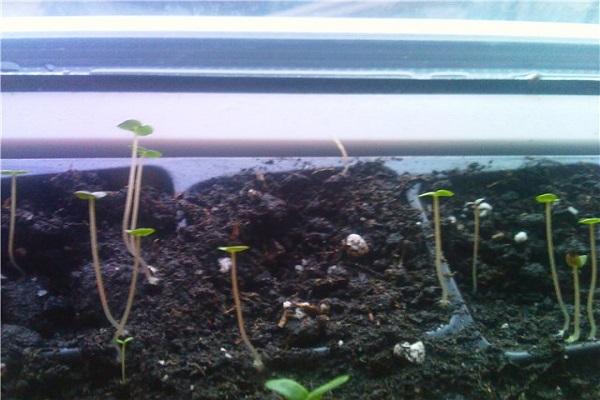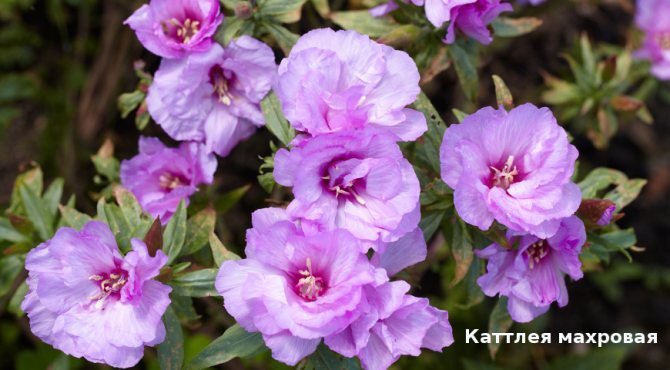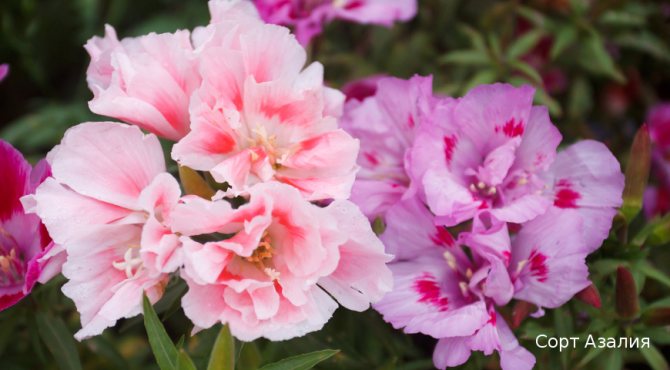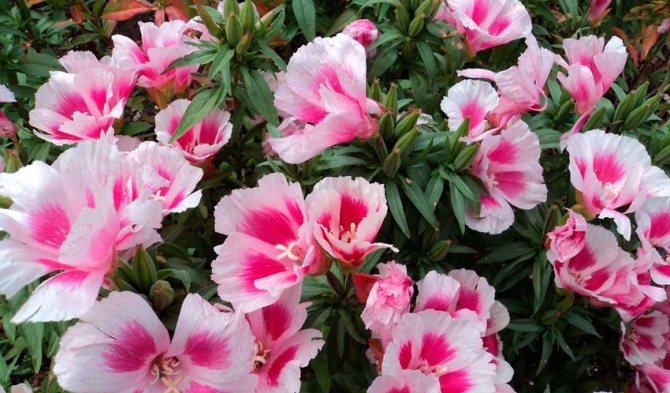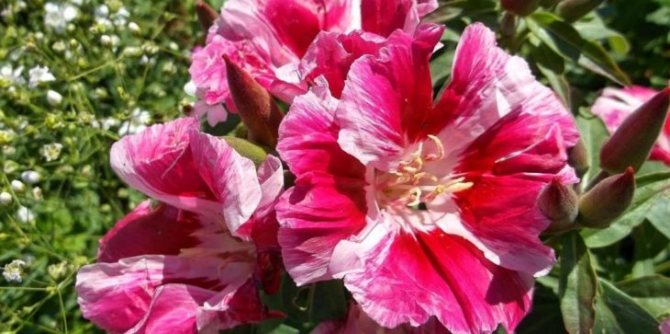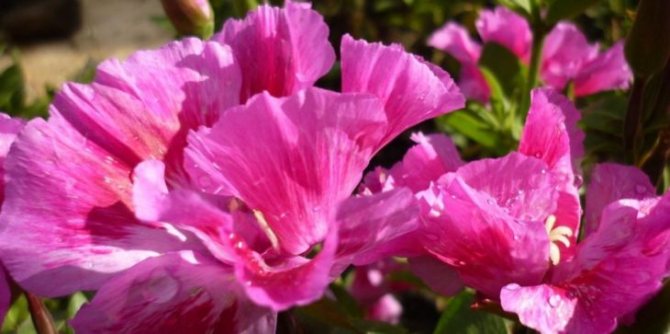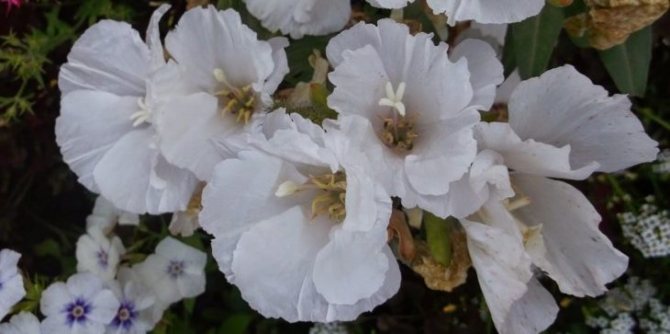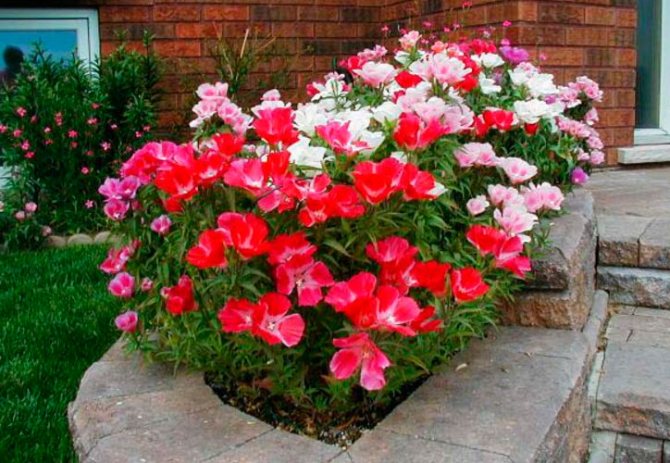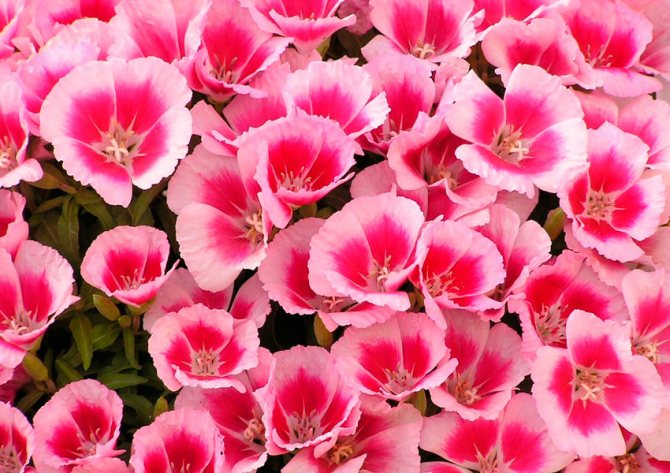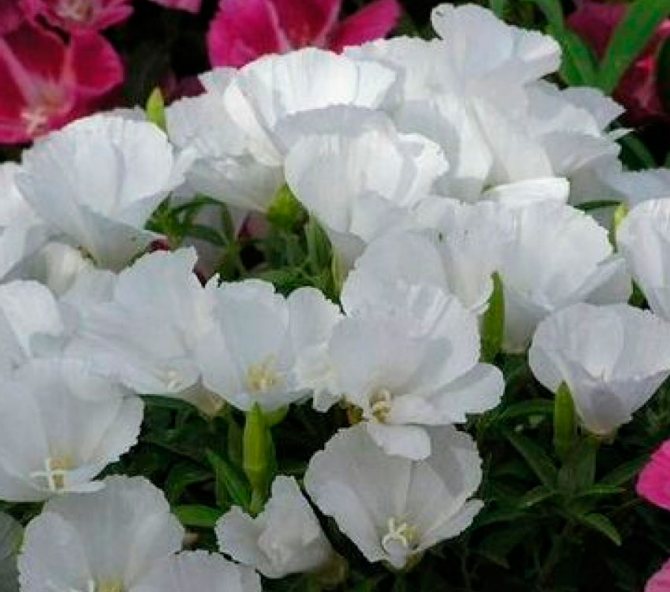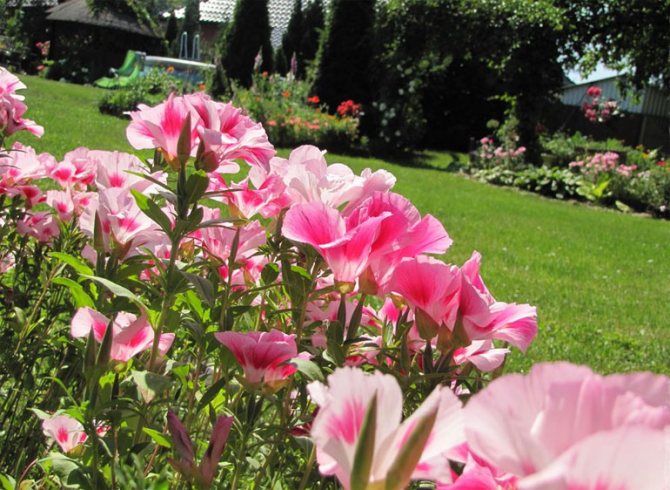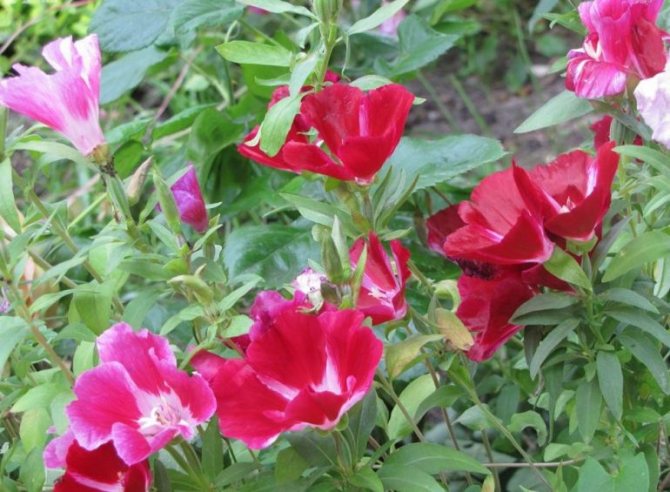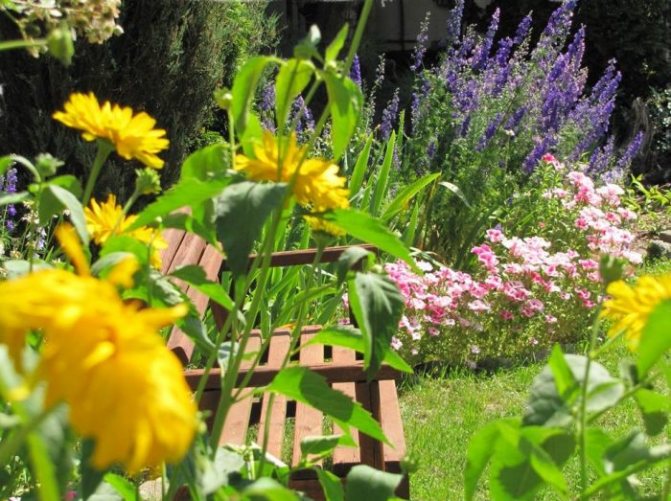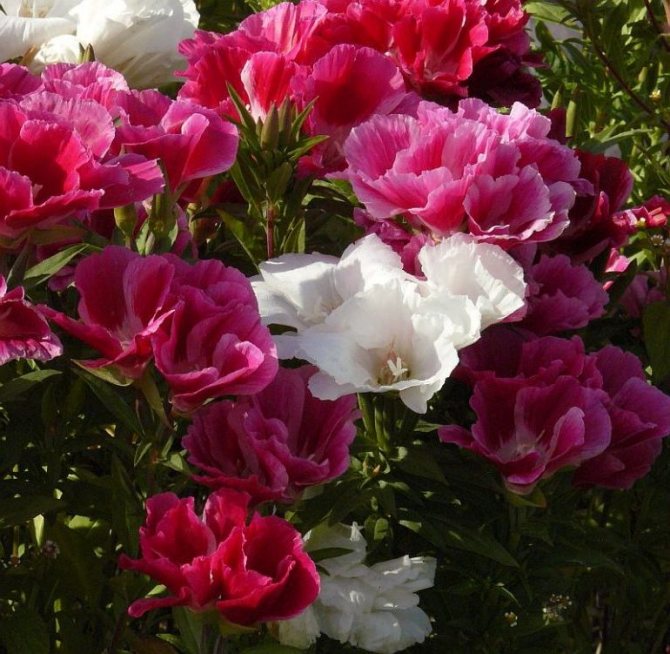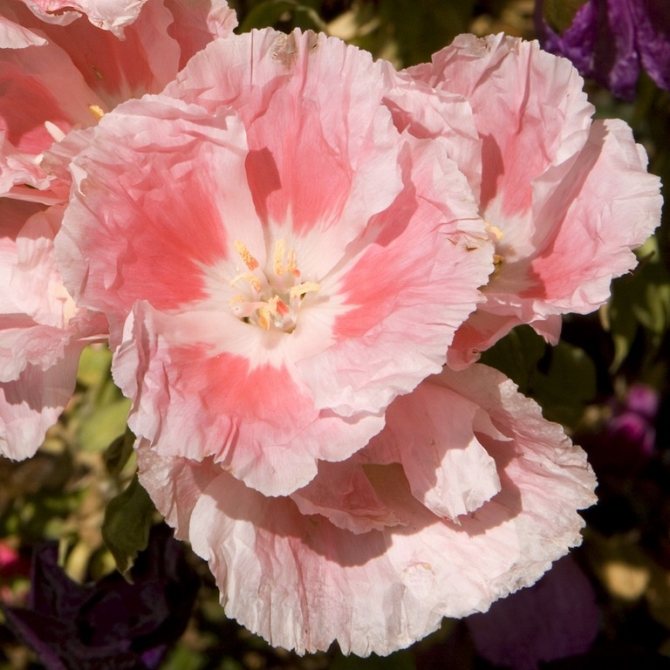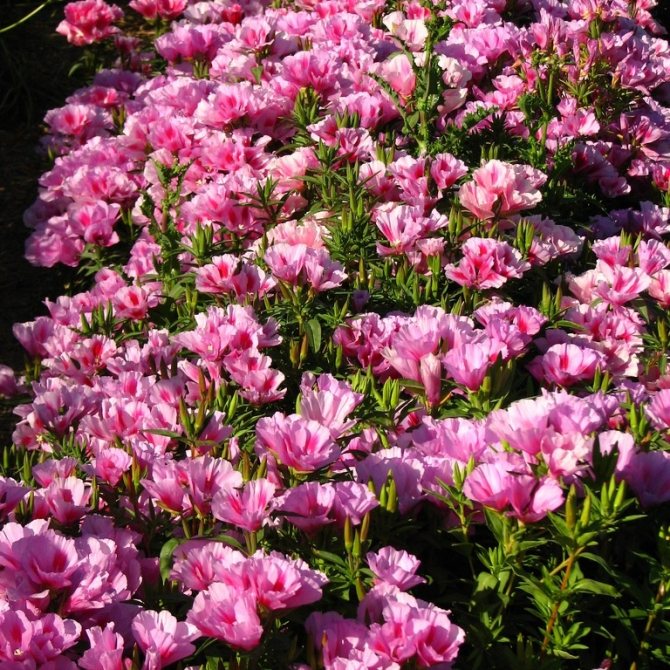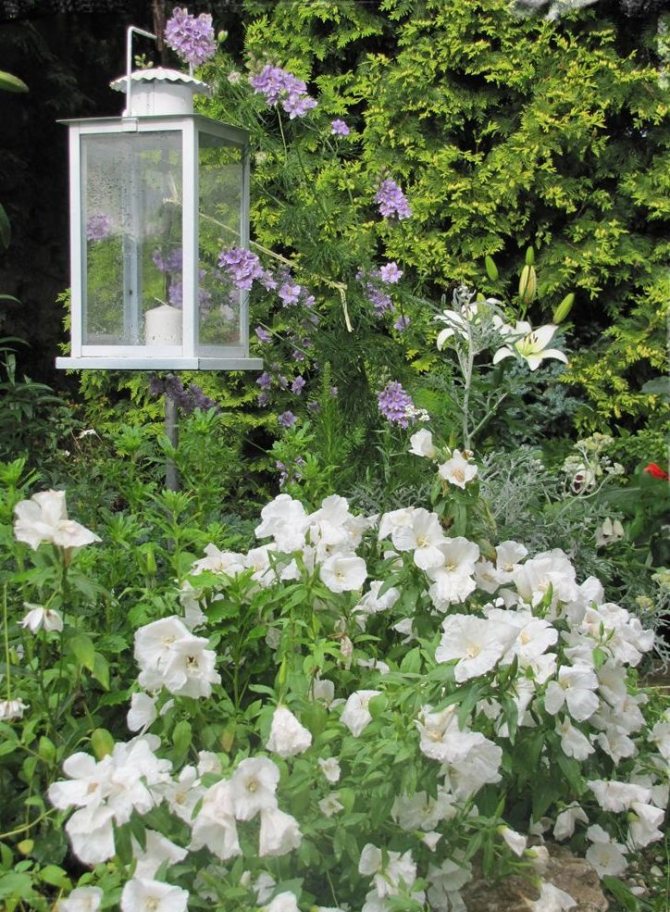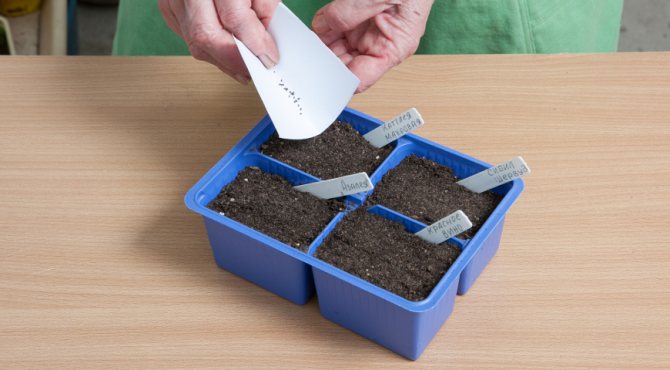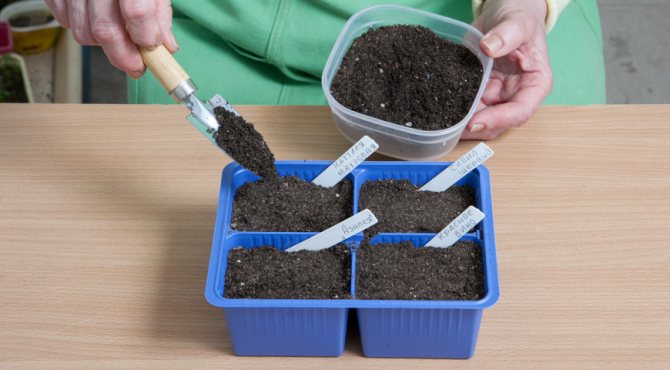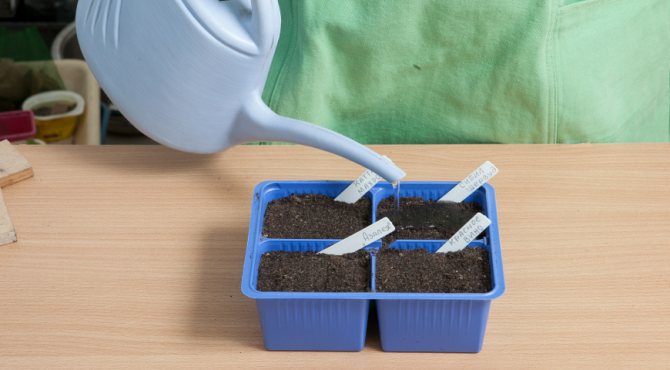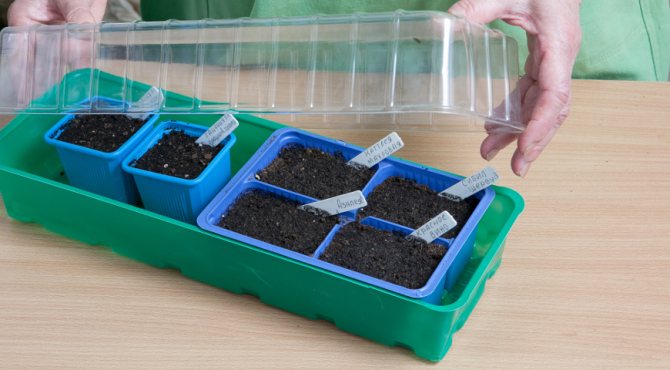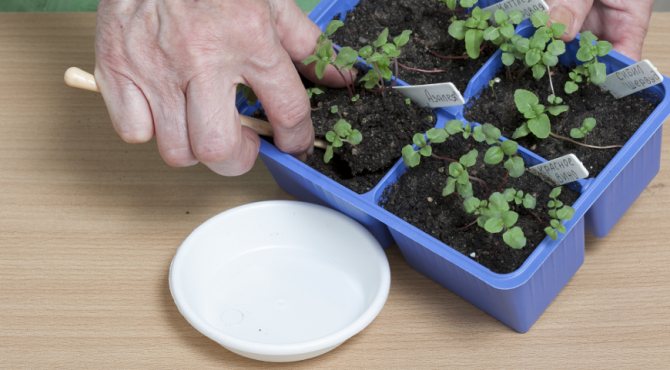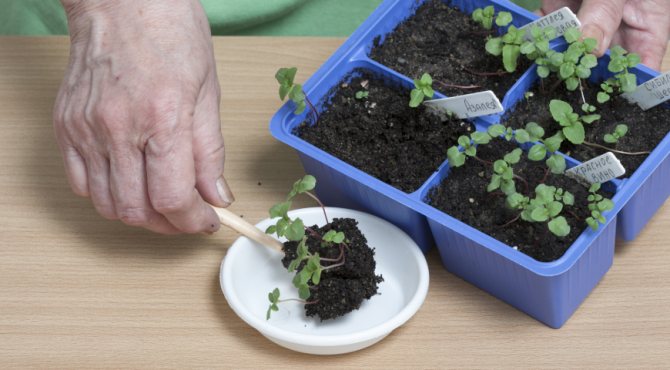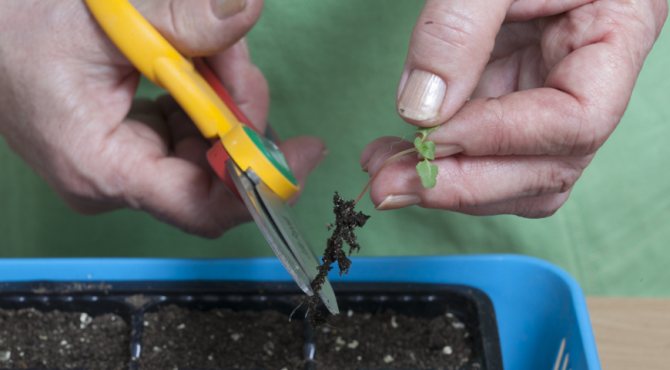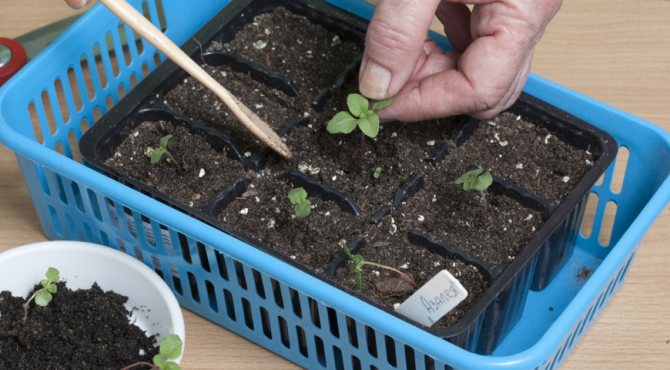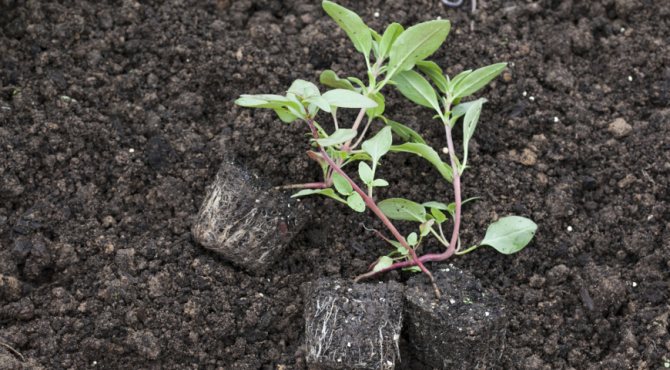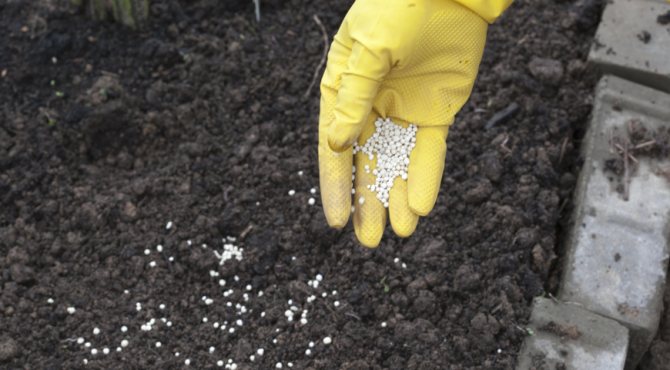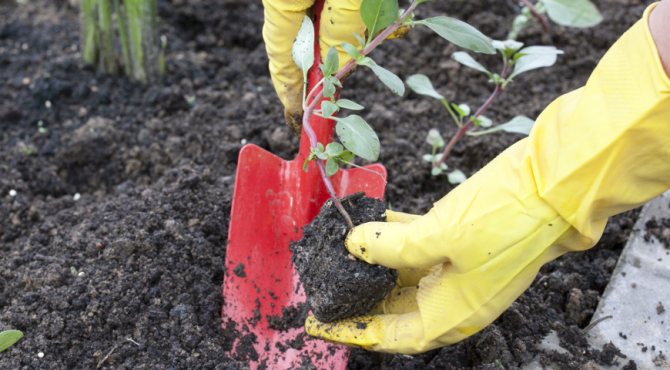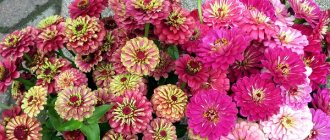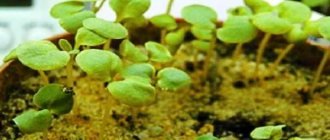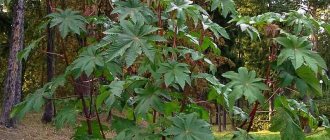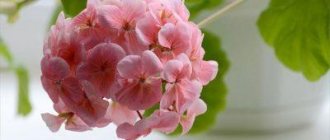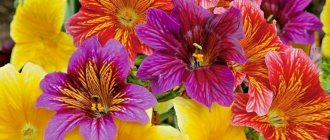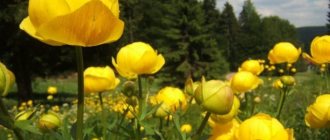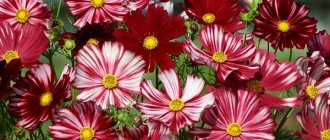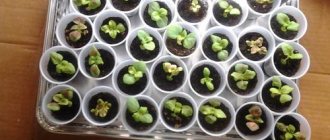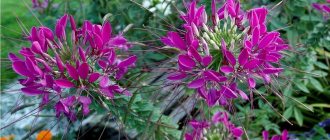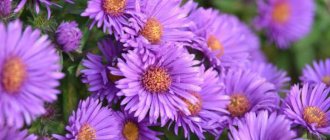Godetia is a plant with graceful large flowers of delicate and bright shades, "queen of the garden", "Californian beauty", as the exquisite annual is often called. Despite the seeming fragility and capricious disposition, the plant blooms before the onset of frost, is unpretentious in care, it is a spectacular decor for summer cottages in different regions.
Godetia: growing from seeds, when to plant, how to care for seedlings, what diseases and pests threaten flowers - these and other questions are covered in the article.
Features of godetia
Godetia bushes grow vertically and resemble a pyramid, spreading are found. Shoots are smooth, branched, up to 60 cm long, erect, can be creeping. At the beginning of summer, they are herbaceous, then they grow stiff. The leaf plates are bright green, oblong, narrow, pointed at the end, arranged alternately on the stem, 4-10 cm in diameter. The root of the plant is shallow, with small branches. Peduncles are very short.
Flowers in the shape of a bell or a bowl with a pleasant, rich vanilla aroma. They have 4 petals, which are simple, satin, silk, terry, wavy, of the same tone or multi-colored. Blossom from July to the end of October. The color is very different: pink, purple, coral, white, red, lilac. Remain open in any weather, do not lose their decorative effect until late autumn. The fruit is a cylinder-shaped capsule with small seeds.
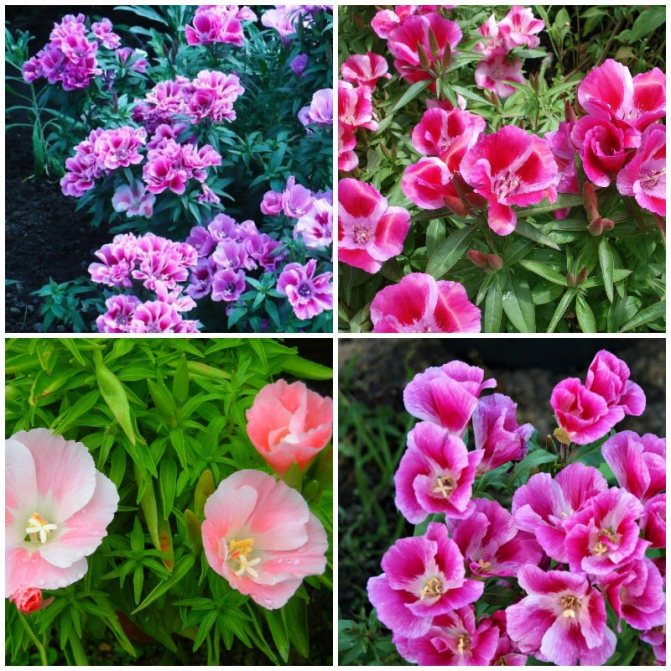
Azalea flower
Preparing seeds for planting
Germination of godetia seeds lasts for three years, while they are quite unpretentious and it is not difficult to plant them in the soil.
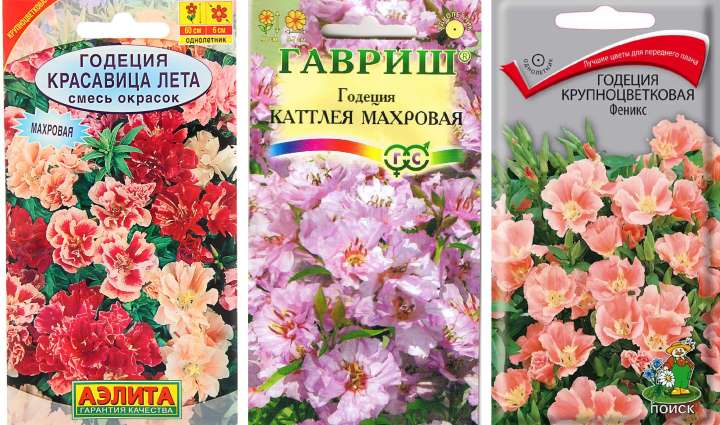

Important!
To prevent the flower from contracting any disease in the future, be sure to disinfect the godetia seeds with a weak solution of potassium permanganate at the initial stage of planting, in which you need to keep the plant for about half an hour. Then add this solution and mix with a little sand and sift.
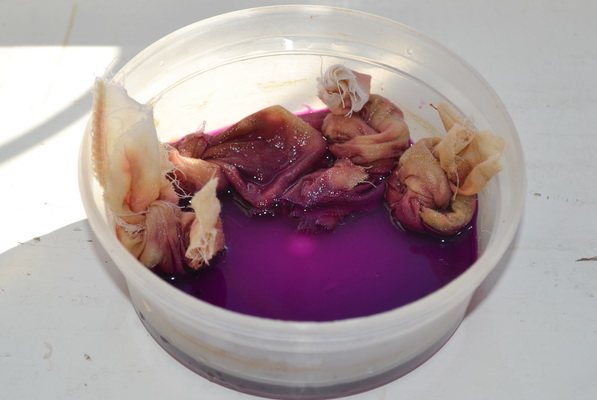

Types and varieties of godetia
More than 20 species of godetia are classified, of which different varieties have been selected.
| View | Description | Flowers |
| Large-flowered | Fragile, pubescent shoots grow up to 20-40 cm, lignified at the end of the growing season. The leaves are narrowed at the base. The racemose inflorescences are located at the ends of the shoots. It blooms from mid-July to the first frost. | Up to 10 cm in diameter, silky, funnel-shaped, lush, double, simple. Colors - cherry, lilac, pink, white. |
| Nice (Adorable) | Up to 60 cm high, medium-branched, erect. Leaves on petioles, arranged alternately. The flowering time is from July to September. | Cup-shaped, funnel-shaped, there are terry, satin. Color - all shades of red-pink, white. |
| Terry | A hybrid does not exist in the wild. | Terry of various degrees and colors. |
| Azalea flower | It tolerates low temperatures, up to 25 cm. | In the form of a bell, pink scale, large. |
Description
Godetia is a genus of annual plants belonging to the fireweed family. The height of compact bushes is from 20 cm to 60. Stems are erect, slightly spreading, well branching, lignified in the lower part by the end of the growing season.Leaves are alternate, oblong-tapering, entire, short-petiolate, in some species with slight pubescence.
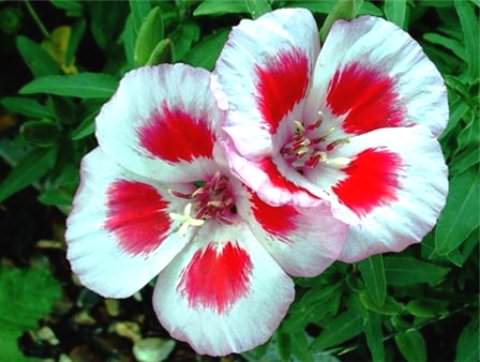

The flowers are relatively large (from 3 to 10 cm), bell-cup-shaped, simple (4-petal). They are collected in racemose inflorescences, stretching out with the dissolution of new flowers. Coloring can be one-color (white, lilac, pink, carmine, etc.) and two-color (salmon pink, white-lilac, etc.). The fruit is a 4-sided or cylindrical capsule containing numerous small seeds.
Godezia varieties
| Name | Height (cm) | Flowers |
| Weisser Schwann | 35 | Satin, white, cupped, whole-edged. |
| White Swan | 30 | Simple, white. |
| Orange glory | 40 | Non-double, orange. |
| York | 35-40 | Wine-colored and white at the base. |
| Blitzstral | 45-60 | Bright red. |
| Sybil Sherwood | 40-50 | Bright coral with a white border. |
| Rembrandt | 30-35 | Terry, tomato-colored in the center and bordered with white. |
| Meteor | 25-30 | Dark red, burgundy with purple, white at the base, large. |
| Summer paradise | 40-50 | Pink, white. |
| Memoria | 45-60 | Snow-white, terry. |
| Girlish Blush | 45 | Large, pale pink at the edges, red in the middle. |
| Red wine | 40 | Raspberry-burgundy. |
| Rosea | 60 | Purplish pink, dark in the middle. |
| Crystal snowflake | 75 | Snow white. |
| Kirshkenigin | 60 | Rose red. |
| Butterfly | 50 | Terry, wavy, pink carmine. |
| Orange Glory | 45 | Silky, bright, salmon. |
| Maiden Blush | Red, light pink, with scarlet dots in the middle. | |
| Summer's kiss | Pink, with red in the middle, wavy, shiny. | |
| Diamond | 30-40 | Red with white spots. |
| Beauty | 30-45 | Delicate, silky, scarlet. |
| Stained glass | 40 | Wavy, salmon, yellow in the center. |
| Monarch | 20 | Bell-shaped, pink, lilac with blue, white with red. |
| Fire king | 25-30 | White in the middle, scarlet around the edges. |
| Feuerkenig | 25 | Scarlet, in the center is a white spot. |
| Honey moon | 35 | Pink, white, cherry. |
| Lava | 40 | Large, wavy, carmine red. |
How you can collect seeds yourself
Collecting seeds yourself is actually not as difficult as it seems to many. You can collect it a month after the flower has faded. At this point, the seeds should collect in the resulting box. The moment it changes color and darkens, it can be cut off. Next, the box must be dried a little and after that, open it and remove the seeds.
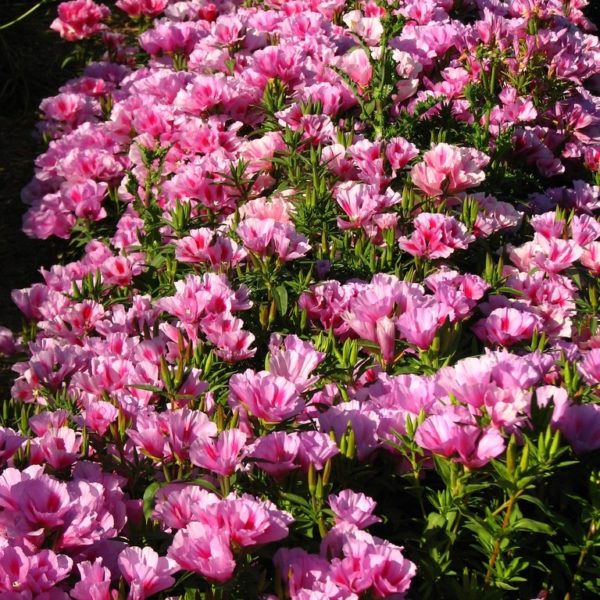

The seeds will be suitable for several years, while they need to be stored in a dark, cool place.
Let's consider some types of godetia in more detail.
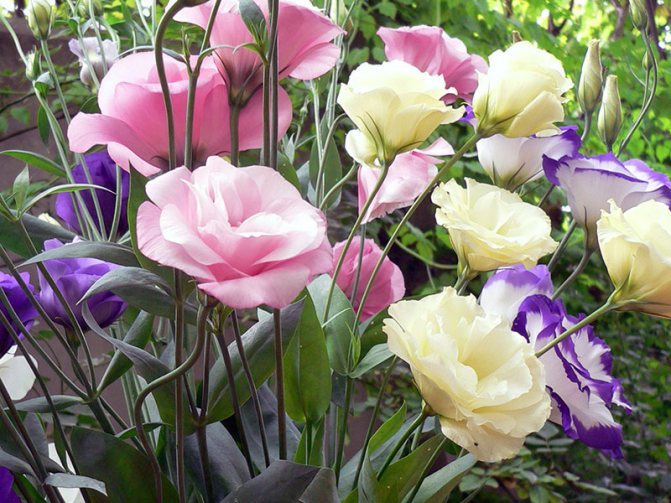

Growing hordetia from seeds
The flower propagates by seeds, two methods of growing godetia are used.
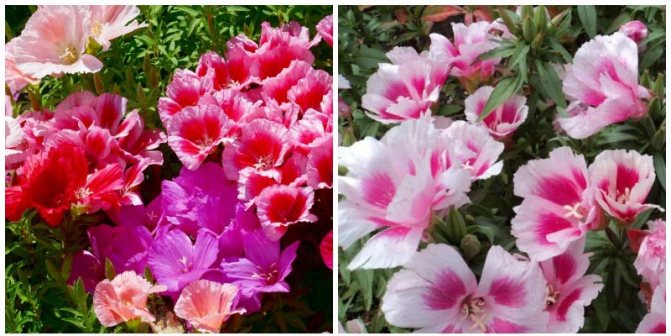

Large-flowered
Into the ground
In warm regions, where there is a lot of snow and the temperature is -15 ... -20 ° C, sowing of the seed in late autumn is allowed. First, soak in manganese for half an hour (weak solution). Godetia prefers fertile, neutral, loamy, slightly acidic soil. In advance, grooves are made with an interval of 10-12 cm, a depth of 5-6 cm. The seeds planted before winter are not watered, sown thickly, covered with peat and protective material. At the same time, seedlings appear in May. Upon reaching a height of 7 cm, the plants are thinned, keeping an interval of 20 cm from each other, or transplanted to a permanent place.
Flowers are sown in open ground in April, and covered with foil to speed up sprouting. After the sprouts are thinned out or planted. They take care of the same as for seedlings. Flowering takes a long time, up to 3 months.
Seedling
Growing from seeds in the northern regions is best done using the seedling method, so the godetia will bloom earlier. Sown at the end of March, in boxes. Prepare the soil from peat, sand, garden land, taken in equal parts or take a purchased one.
For convenience, small seeds are mixed with sand. In order to avoid diseases, dishes and substrate are disinfected, spilled with boiling water, disinfected with Fundazol.The soil is watered when the water is absorbed, the seeds are scattered, covered with a thin layer of soil by 0.5 cm.Cover with a film, periodically ventilated. Moistened with a spray bottle. They sprout in 10 days, then remove the film.
Light for them requires 12 hours a day, watering is moderate. The temperature is set + 20 ... + 22 ° C. In early May, they are hardened, taken out into the street for 2 hours, increasing the time every day. When the threat of frost has passed, it is left overnight.
Watered, avoiding dryness of the soil. After the sprouts appear, they are fed for the first time and another week before planting in the ground. Seedlings dive after the appearance of two true leaves. Peat pots, cassettes, tablets are better suited for this. In this case, the roots are cut by 2-3 cm. Fertilize with complex mixtures for flowers in a week.
If the sprouts are stretched, the reason is a lack of lighting, you need to rearrange the plants to a more illuminated place or artificially illuminate them.
Growing and care
It is preferable to grow Godetia in sunny areas. In partial shade, the number of flowers is less, but more intense color. Plants are very sensitive to an excess of moisture in the soil, but even with a lack of excellent their health cannot be called. Adapting to watering these beauties is the main difficulty. It is necessary to feed with complex fertilizers regularly, preferably three times a month.
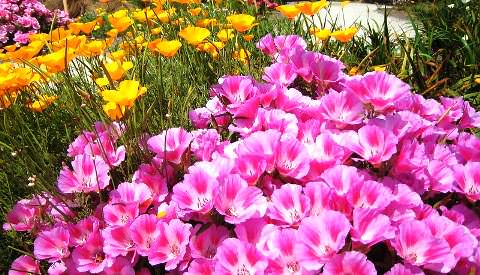

Annual flowering begins 2 months after germination and continues until frost. Each flower is decorative for 3 days. To maintain a high decorative effect of plants and stimulate the formation of new buds, wilted flowers must be removed.
Godetia can be attacked by leaf-eating insects. To minimize this threat, plantings must be cleared of weeds. With a strong infestation by pests, treatment with insecticidal preparations, for example, Fito-Verm, Aktelik, etc., will be required.
Reproduction
Godetia, like other annuals, is grown from seed. For earlier flowering, you can grow seedlings by sowing seeds in March in a container with disinfected soil or in a greenhouse. Seedlings usually appear within two weeks. A pick into separate cups can be carried out only at a young age and with an earthen lump. Otherwise, the recovery takes too long, and death is not excluded. When transplanting to a permanent place, leave about 20 cm between the plants.
Direct sowing in the ground is possible already in April - early May, because seedlings easily survive minor frosts. In the southern regions, winter sowing is also practiced, which greatly simplifies cultivation.
Use in landscape design
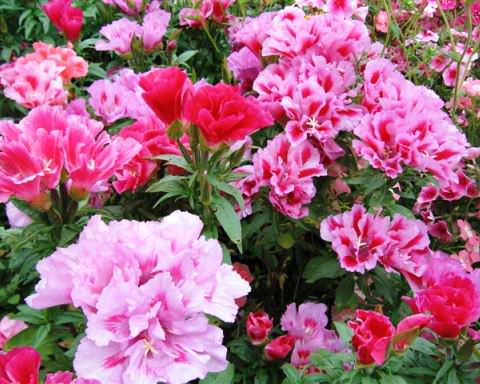

Godetia looks good both with partners and in monoculture, for example, against the background of a lawn. Low-growing varieties are suitable for growing on the balcony and as border plants. Tall ones can be planted in flower beds and in mixborders in the central part. A good frame for them will be low ornamental deciduous plants (cineraria, Byzantine stachis, etc.) or blooming with small monochromatic flowers (ageratums, lobelia, etc.).
Blooming godetia is a fascinating sight. Usually, having grown it once, it is impossible to refuse further cultivation.
Godetia is an annual flower of the Cyprian family from North America, where it is called the "California rose". Occurs on forest edges, meadows, and banks of water bodies. Named after the Swiss botanist Godet, who first described the plant. In Europe, it has been popular since the middle of the 19th century. Bright and attractive, it decorates flower beds, ridges, mixborders, is in demand in landscape design and lives in indoor conditions. The plant is unpretentious, tolerates temperature extremes, frosts.
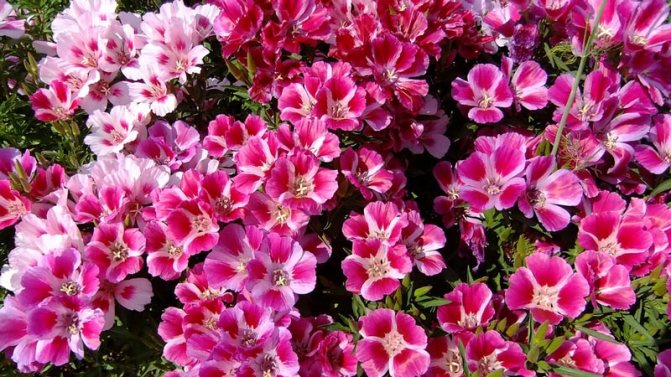

Planting seedlings in open ground
A flower is planted in the garden 6 cm tall, after a wave of frost. The site is selected open, well-lit, in the shade the flowers will not be large. On the eve of planting, the earth is dug up twice, mineral complexes with humus and wood ash are introduced. They are planted by the pass method, together with a lump of earth, since the godetia reacts negatively to the transplant. The time for landing is chosen early in the morning or in the evening. Water the first week abundantly, mulch around the soil. The distance is kept 20 cm for low varieties, for high ones - 40 cm.
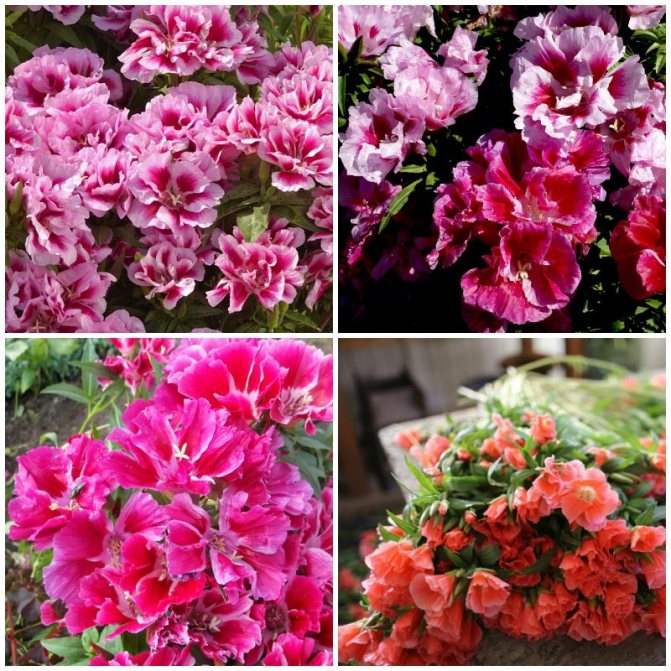

Terry
Sowing seeds for seedlings
When all the preparatory work for planting is completed, the drainage is ready and the seeds are processed, you can start sowing.
Advice!
Plant the seeds immediately in the container so that later you do not transplant again and do not injure the sprouts.
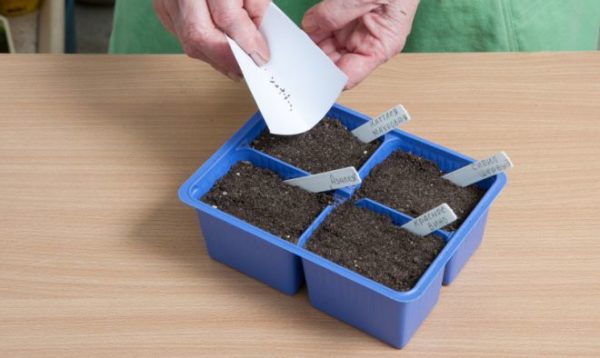

So, in the process of planting, it is necessary to make not very deep parallel grooves in the soil, the distance between them should be at least 3 cm. Distribute the seeds evenly in them, and then lightly sprinkle with the substrate. It is impossible to tamp the soil strongly.
Watering the soil immediately after planting the seeds should be done carefully, the main thing is not to flood them. It is best to lightly dampen the ground with a spray bottle.
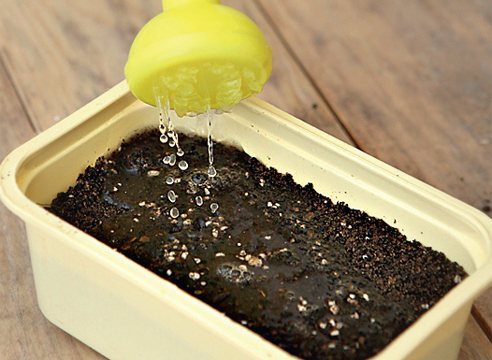

From above, the container with seedlings must be covered with something slotted, for example, glass or film. Once you are done, place the containers in a well-lit, warm place. Ventilate the seedlings regularly and water as needed.
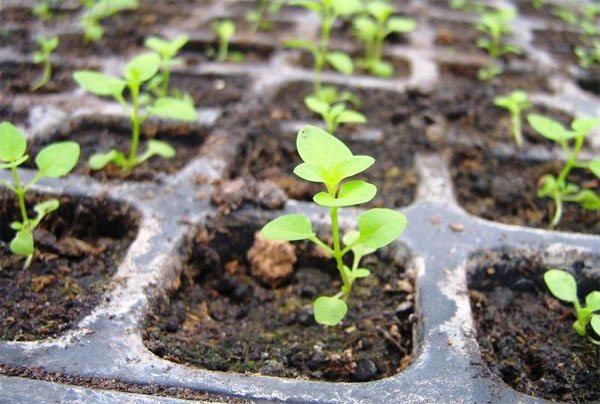

When the first shoots appear, the glass or film can already be removed. It is possible to remove the final part of the root from the godetia when at least two full-fledged leaves appear on the shoots. It is necessary to dive the central root of the godetia by at least a quarter. Then the plants can be transplanted into separate containers, 2-3 shoots in each. Do this carefully so as not to damage the sprouts.
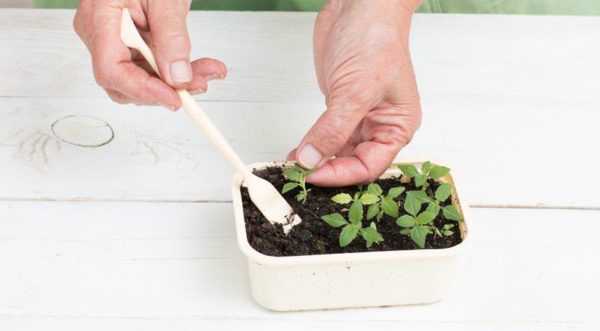

Outdoor godetia care
To enjoy the flowering species of godetia, it is important to follow all the rules of care - watering, feeding, weeding.
Watering
The bushes are watered moderately and often, while avoiding waterlogging and drought, not with cold water.
Top dressing
Depending on the composition of the soil, the plants are fertilized once or twice a month. First, a week after planting in the ground. With the formation of buds, mineral complexes are introduced. An excess of nitrogen should not be allowed, this will lead to abundant foliage growth, but the flowers will be small. They are fed with Nitrofoskaya (12 liters of water and a tablespoon of the product), Agricola, Ideal.
Weeding
Bushes constantly weed from weeds, loosen the ground after watering.
Formation
Withered flowers are removed and thus prolonged flowering. Dried leaves are also removed, too tall plants are tied to supports, otherwise they will bend from the weight and will look unsightly.
After flowering
Seed ripening occurs four weeks after the godetia has faded. When the seed pods darken, they are cut off, then dried, the seeds are removed, which remain viable for 4 years. With the onset of frost, the bushes are removed along with the root and burned so that diseases do not spread, they dig up the earth.
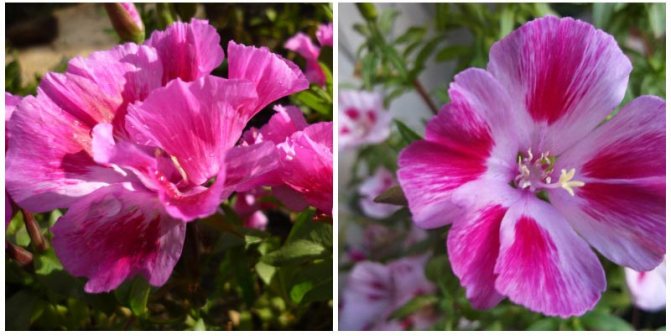

Pleasant
What is godetia
You may be interested in: How to create a rose garden at a summer cottage: ideas with photos, schemes, planting and care Growing and caring for clerodendrum at home Caring for guzmania at home
Godetia was brought to Europe from the sunny shores of North America. In Switzerland, the plant was studied by the biologist C. H. Gode, after whom the flower was named. In the European climate, godetia has taken root well, and today it is one of the most popular plants in the world.
The sizes of the stem of godetia range from 15 cm to 65 cm, while they can often creep along the ground. In different plant species, the stems can be either smooth or branched.
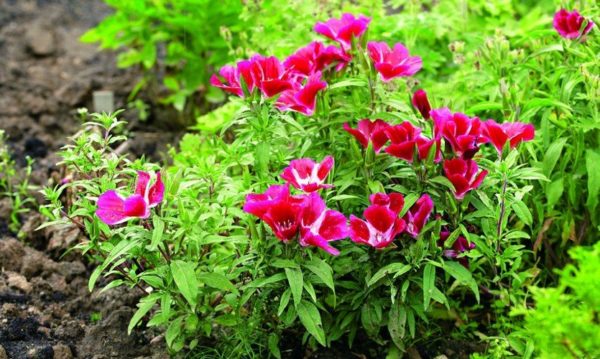

The flower buds are quite large, about 8-11 cm in diameter, the petals can be either smooth or double. Godetia flowers come in a wide variety of shades and combinations. After flowering, the fruits of the plant appear in a cylindrical box with sharp edges.
Godetia is not only a very beautiful plant, but also quite unpretentious and frost-resistant. Its flowering continues from summer to the first frost in autumn.
Diseases and pests
If the rules of care are violated, the godetia can get sick or be exposed to pests.
| Disease / Pest | Manifestations | Remedies |
| Root rot | The root system turns black, the leaves dry out. | The infected parts are removed, burned, the soil is treated with copper sulfate. |
| Powdery mildew | White bloom. | They are treated with Topaz, Fundazol. |
| Peronosporosis | Small spots on the leaves. | The drugs are used: Abiga-Peak, Oksikhom, Previkur. |
| Rust | Brown spots. | Sprayed with Bordeaux liquid 1%. |
| Aphid | Green insects. | They use folk remedies, solutions: soap, wood ash, tobacco. In advanced cases, insecticides are effective (Tanrek, Aktara). |
Diseases to which godetia is susceptible
Godetia tolerates cold quite well, but it cannot cope with many diseases and pests.
The most common disease of this plant is root rot, which is formed as a result of infection with a fungus or too much watering of a flower, when the water simply does not have time to be absorbed into the soil. If you find such a disease, then, unfortunately, the plant will have to be removed, since it will no longer be possible to cure it.
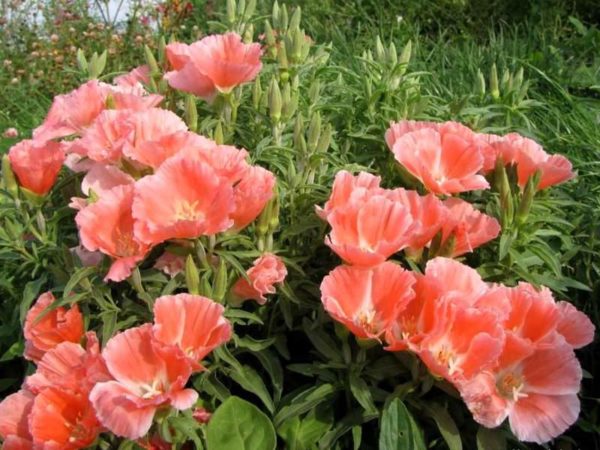

Another disease of godetia is peronosporosis, the signs of which are spots on the leaves. In this case, the plant can be cured with the help of fugnicides.
Mr. Dachnik recommends: tips for growing godetia outdoors
For the active growth of a flower, it is necessary to remember about the distinctive features of care:
- The place is chosen without drafts, it is possible with light partial shade.
- Seedlings are planted outside only until buds form, not blooming.
- Peat and urea are added to the alkaline soil before planting.
- Together with digging, charcoal, humus, compost are introduced.
- Watering is chosen by drip, abundant is needed in drought, the rest of the time, an excess of moisture can lead to disease.
- The bushes are sprayed in the heat only after sunset.
- Pinch off the excess ovary.
- For better flowering, white clay is mixed into the soil.
In severe drought, the bushes shade. Containers for growing a flower on the street are selected in light colors so that they heat up slightly and establish drainage, avoiding stagnation of excess liquid.
Soil preparation for planting
No special soil preparation ritual is required for planting. When seedlings of godetia, it is only necessary to take into account in what kind of soils the plant grows best. The best soil for godetia can be prepared at home, it will consist of garden soil, sand, which are mixed in equal proportions.
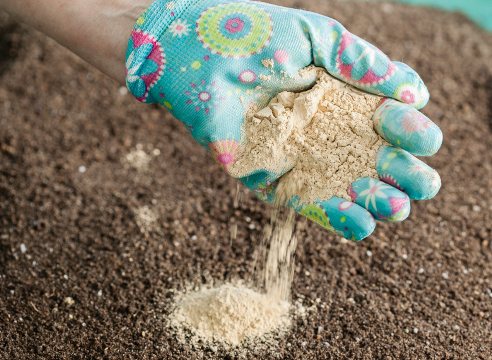

Note!
When seedlings of godetia, be sure to remember about drainage, without which the plant can quickly die. For preparation, initially disinfect the seedling container, and then sprinkle it with soil, also disinfected. Then the soil must be slightly moistened, and only then plant the seeds.
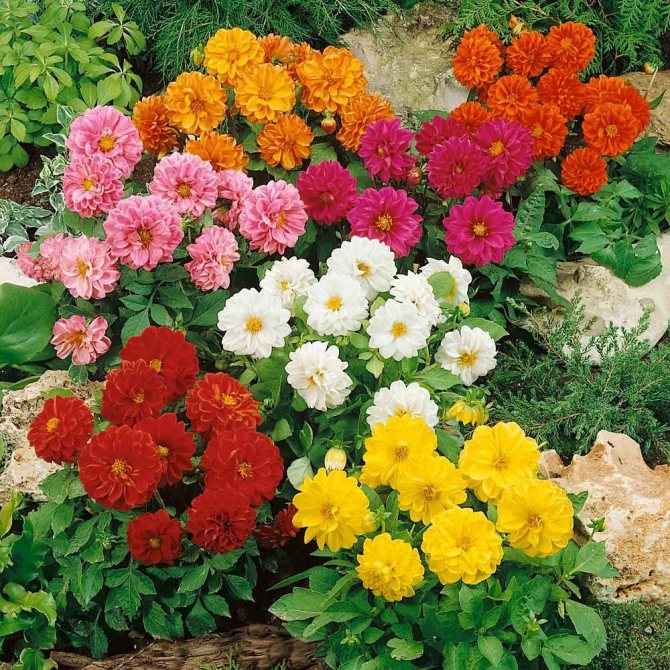

Use in landscape design
Depending on the variety, godetia can be used in different ways in landscape design.
Plants with tall stems look spectacular in the center of the mixborder. The stunted ones adorn the slopes of the alpine slides and flower borders placed along the garden paths or around the lawns. Combine with petunias and peonies.
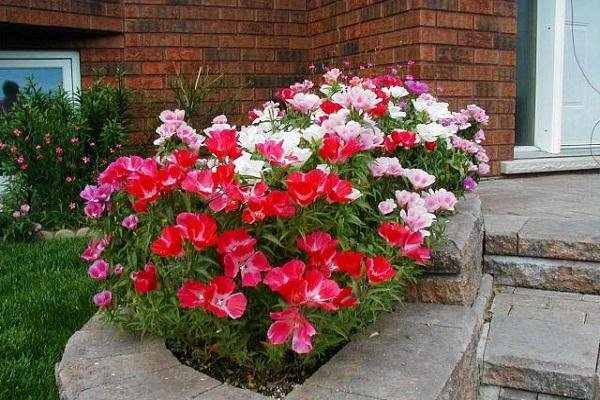

How to keep blooming godetia?
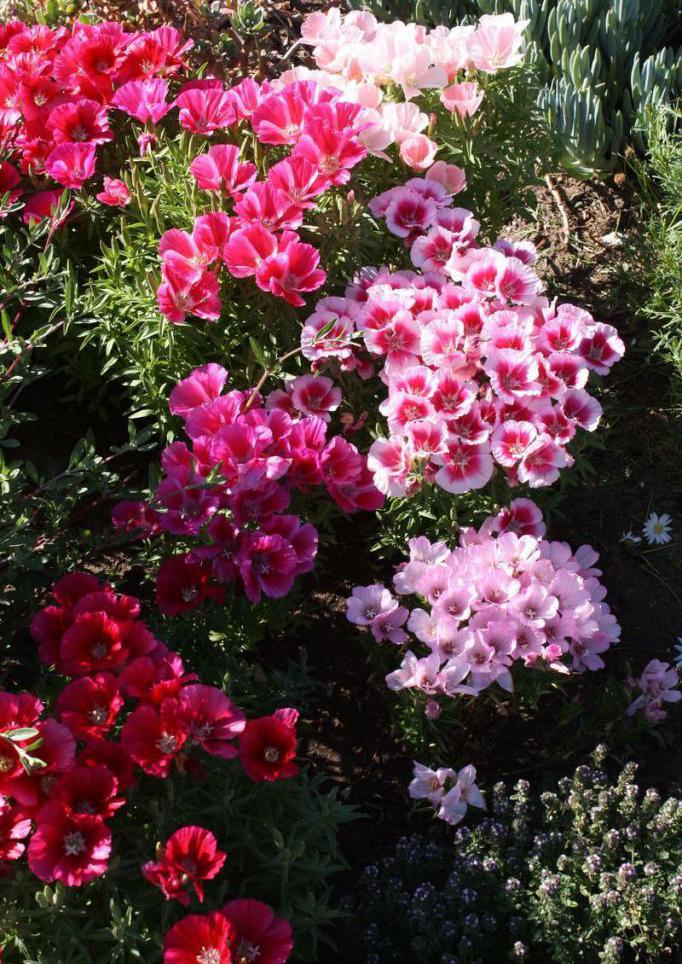

As a rule, all types of godetia begin to bloom in late spring - early summer. The duration of their flowering is inversely proportional to the air temperature.After the godetia flowers have been cut, they should be placed in a vase of water and placed in a cool, damp place. Care should be taken to keep the flowers away from heat sources and out of direct sunlight.
An interesting feature of the plant is that when it begins to bloom, the leaves begin to turn yellow. Therefore, in cut godetia, it is recommended to remove all leaves that are susceptible to this symptom. The water in the flower vase should be changed every two days, and the vase should be thoroughly washed to eliminate possible bacteria.
Cut flowers, subject to the above rules, can last longer than 1 week.
Plant flowers
It can be said without exaggeration that godetia flowers are one of the most beautiful among those that can be found on store shelves. They are sold in two flavors:
- a flower on a stem for making a bouquet;
- plant in a pot for decorating a home or summer cottage.
It is believed that if a guy gives his girlfriend a bouquet of these flowers, then this gesture symbolizes eternal and passionate love. A young man in this way swears loyalty to his chosen one, expresses respect and admiration.
Flowers of large-flowered godetia, as well as its varieties bred by selection, are often called silk because of the fine structure of their petals.
Although the flowers of the plant are bright and beautiful, their color scheme is characterized by relative simplicity, since the dominant colors of almost all types of godetia are white and red (pink).
Clarkia the adorable, Clarkia the pretty, Godetia the adorable, Godetia the grandiflorum
• sowing before winter is possible in the southern regions; • when sown in the ground in the spring in the Central zone of the Russian Federation, it blooms only in August
• 3500 seeds in 1 g; • retain germination for 2-3 years; • seeds germinate in 2 weeks
withstands frosts down to -3 ° C
• suffers from dampness in rainy summers, and from heat in dry summers; • damaged by leaf-eating pests, in connection with which it is necessary to monitor the cleanliness of plantings, preventing the development of weeds
The best way to decorate the local area is to plant a godetia, which will delight you with magnificent pink, burgundy, lilac and red flowers for several months. For the boiling riot of colors during flowering, godetia was nicknamed the flower of passion. The attractive and vibrant flower can often be found in flower beds and in containers.
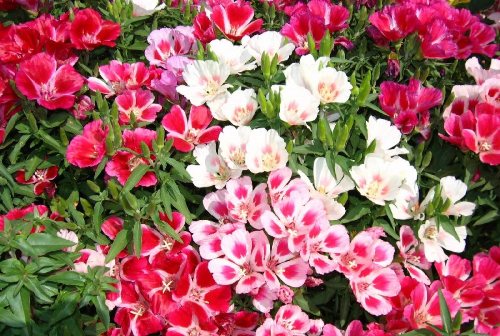

Godezia
Origin
Godetia is a beautiful annual plant of the fireweed family. The flower got its name from the name of the botanist Godet, who studied and classified the plant. The godetia is believed to have originated in California. After distribution, it decorates the gardens and parks of European countries, North and South America. Identified and classified about 20 flower species.
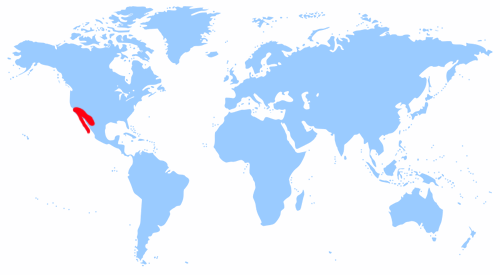

Homeland of the plant
We select good soil
Godetia grows on loamy soil. And at the same time, excessive moisture intake should be avoided. When cultivating planting material in a balcony box, take care of an additional drainage layer. The plant prefers slightly acidic soils to alkaline soils. Lime is used for deoxidation; dolomite flour is preferred. How else to eliminate the alkaline environment? You can add urea, dilute with peat. The soil is prepared with their own hands, mixing garden soil, peat, river sand in equal proportions.
One of the conditions for good growth of a godetia flower is planting and caring in a place where the sun's rays constantly come. The plant prefers dim lighting. The midday heat burns delicate petals. The best option would be areas with light shading. It is not afraid of frost, but we still recommend choosing not the northern, but the southern side for planting seedlings. By combining godetia with annuals, perennials, you can achieve amazing color results.
Varietal variety
The breeders have bred varieties of godetia, presented in the photo of flowers, many shapes, flowers and bushiness, which allows you to form graceful flower beds and border plantings of fascinating aesthetic appeal.
Among the most attractive varieties, it is worth noting:
- A diamond with red terry inflorescences dotted with white spots.
- The monarch is distinguished by early and lush flowering, as well as short stature. A dwarf variety up to 20 cm high is often used to decorate balconies and in pot culture. A compact bush withstands cold weather.
- A bride with snow-white buds in the shape of an azalea.
- Rembrandt has double, gorgeous pink flowers with a carmine mark in the center.
- The meteor is distinguished by its early flowering. Its red buds are slightly fleecy.
- Orange Rum has a branchy bush up to 45 cm high.It is covered with orange-red buds 5 cm in diameter during the flowering period.
- Sybil Sherwood is a compact and hardy shrub. Semi-double flowers are painted in salmon tone.


Monarch
What to do if the seedlings are pulled
Pulling seedlings is likely in case of too thick sowing or lack of sunlight. There are several ways to solve this problem:
- diving into separate containers;
- the addition of artificial lighting;
- reducing watering to a minimum.
A few days after the pick, it is recommended to feed with a weakly concentrated complex fertilizer.
